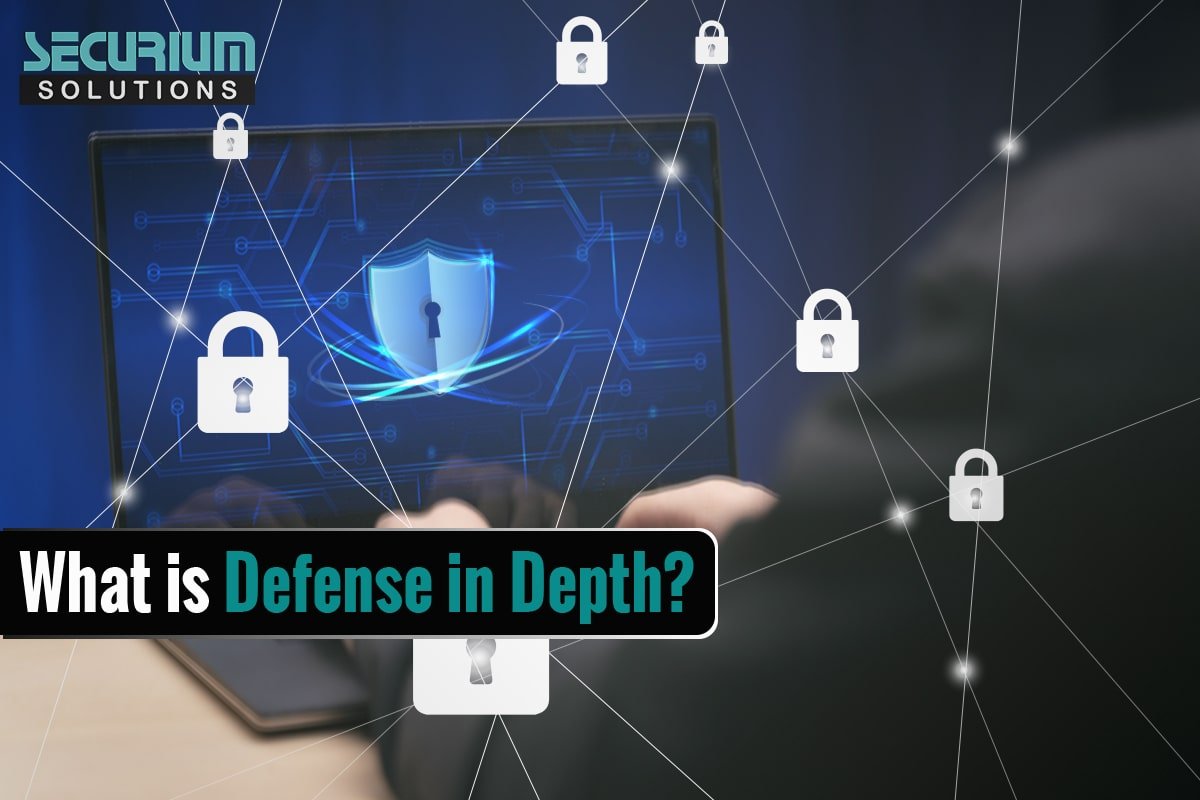May 01,2023 / By Securium Solutions
Defense in depth is a strategy that leverages multiple security measures to protect an organization’s assets. The theory is that if one line of defense is breached, additional layers of defense exist as a backup to ensure that threats are stopped along the way. In short, the most import asset will be more secured, in Defense in depth addresses the security flaws that exist not only in hardware and software, but also in people, as ignorance or human error are frequently the cause of a security breach.
The scale and sophistication of today’s cyber risks are continually increasing. Defense in depth is a complete method to protecting an organization’s endpoints, data, apps, and networks that leverages a variety of advanced security solutions. The goal is to prevent cyber threats from occurring, but a strong defense-in-depth approach can also counter an existing attack, preventing additional damage.
Antivirus software, firewalls, secure gateways, and virtual private networks (VPNs) serve as traditional corporate network defenses and are certainly still instrumental in a defines-in-depth strategy. However, more sophisticated measures, such as the use of machine learning (ML) to detect anomalies in the behavior of employees and endpoints, are now being used to build the strongest and most complete defines possible.
How Does Defense in Depth Help?
By layering and even duplicating security processes, the likelihood of a breach is minimized. The majority of businesses are aware that a single layer of security or a single point product, like a firewall, is insufficient to fully protect a company from the more sophisticated cybercriminals of today.
Defense in depth, for instance, offers administrators time to activate countermeasures if a hacker infiltrates a company’s network. In order to prevent additional access and safeguard the organization’s applications and data from compromise, firewalls and antivirus software should be in place.
At first glance, redundant security measures could appear wasteful. A defense-in-depth strategy, however, deters attackers since it has backup security measures in place in case one protection solution fails.
Layers of Defense in Depth
Policy: This layer involves implementing security policies and procedures that govern how an organization manages its IT systems, networks, and data. Establishing security guidelines including password standards, access control guidelines, data classification guidelines, and incident response guidelines is part of this. These policies offer instructions for staff members and other users on how to utilize the company’s IT resources safely and ethically.
Physical: This layer focuses on securing physical access to the organization’s facilities and IT infrastructure. This may include physical security measures such as access control systems, security cameras, alarm systems, and physical barriers to prevent unauthorized entry into data centers, server rooms, and other sensitive areas. Physical security measures are important in preventing physical theft or damage to IT assets, which could potentially lead to a security breach.
Perimeter: This layer involves securing the network perimeter, which is the boundary between the organization’s internal network and the external network, such as the internet. This may include deploying firewalls, intrusion prevention systems (IPS), virtual private networks (VPNs), and other security appliances to filter and block incoming and outgoing network traffic. Perimeter defenses are the first line of defense and help prevent unauthorized access to the internal network and protect against external threats.
Internal network: This layer focuses on securing the internal network by implementing network segmentation, access controls, and monitoring mechanisms to limit the potential attack surface and prevent unauthorized lateral movement within the network. This may involve deploying technologies such as virtual LANs (VLANs), network access controls (NAC), and security information and event management (SIEM) systems to detect and respond to potential security breaches within the internal network.
Host: This layer involves securing individual hosts or endpoints, such as servers, workstations, and mobile devices. This may include implementing endpoint protection software, host-based firewalls, and intrusion detection/prevention systems (IDS/IPS) to detect and block malicious activities on individual devices. Host security measures also typically involve regular patching and updates to address known vulnerabilities and hardening the configuration of hosts to minimize potential attack vectors.
Application: This layer focuses on securing applications and software systems used within the organization. This may involve implementing secure coding practices, conducting regular application security testing, and using web application firewalls (WAFs) to protect against common application-level attacks such as cross-site scripting (XSS) and SQL injection. Application security measures are important to prevent attacks targeting vulnerabilities in applications and to protect against data breaches and unauthorized access to sensitive data.
Data: This layer involves protecting sensitive data throughout its lifecycle, including data at rest, in transit, and in use. This may involve implementing data encryption, data loss prevention (DLP) mechanisms, data backup and disaster recovery measures, and access controls to ensure that only authorized users have access to sensitive data. Data security measures also typically involve monitoring and auditing data access and usage to detect and respond to potential data breaches.




